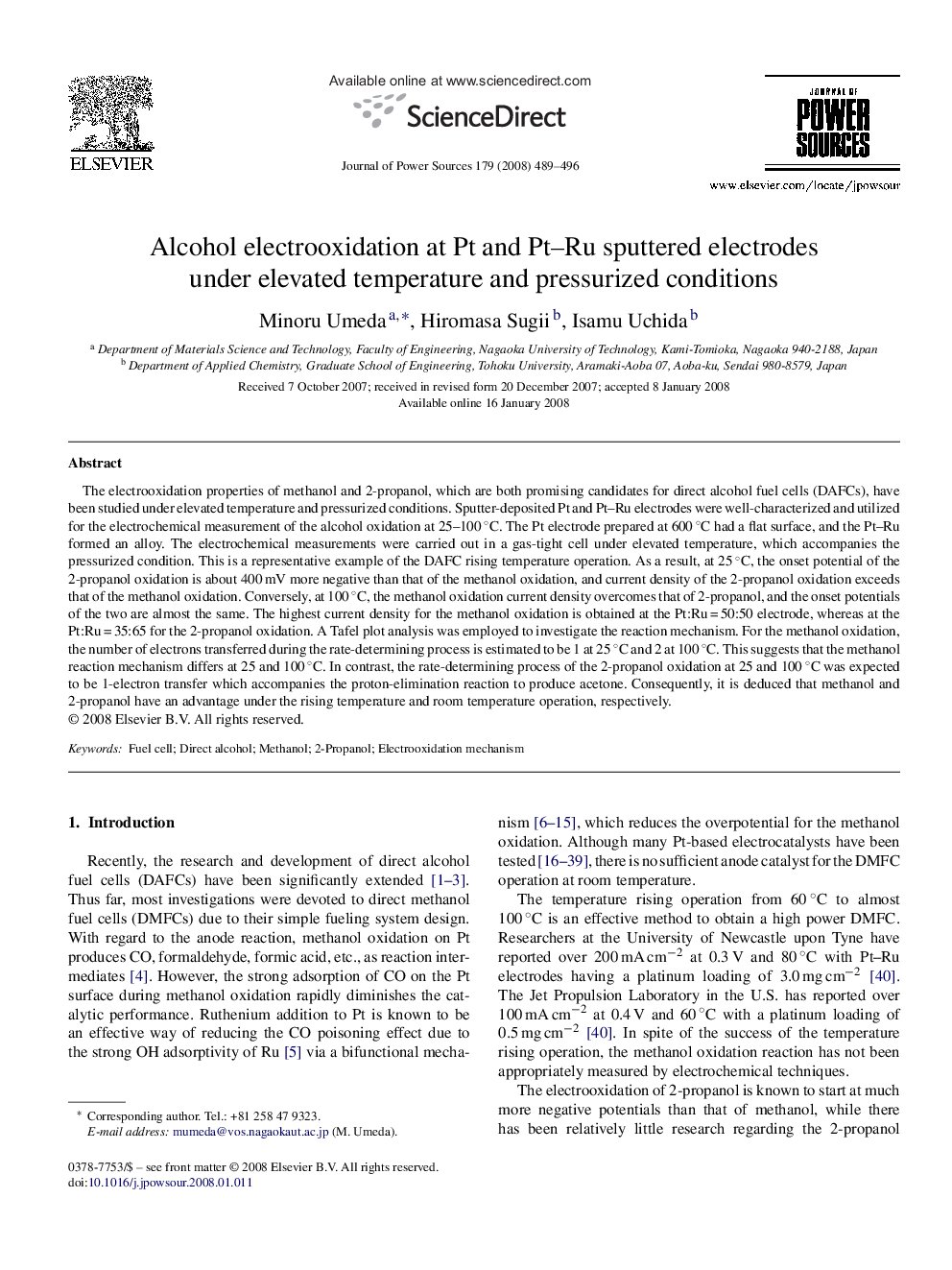| کد مقاله | کد نشریه | سال انتشار | مقاله انگلیسی | نسخه تمام متن |
|---|---|---|---|---|
| 1294671 | 973633 | 2008 | 8 صفحه PDF | دانلود رایگان |

The electrooxidation properties of methanol and 2-propanol, which are both promising candidates for direct alcohol fuel cells (DAFCs), have been studied under elevated temperature and pressurized conditions. Sputter-deposited Pt and Pt–Ru electrodes were well-characterized and utilized for the electrochemical measurement of the alcohol oxidation at 25–100 °C. The Pt electrode prepared at 600 °C had a flat surface, and the Pt–Ru formed an alloy. The electrochemical measurements were carried out in a gas-tight cell under elevated temperature, which accompanies the pressurized condition. This is a representative example of the DAFC rising temperature operation. As a result, at 25 °C, the onset potential of the 2-propanol oxidation is about 400 mV more negative than that of the methanol oxidation, and current density of the 2-propanol oxidation exceeds that of the methanol oxidation. Conversely, at 100 °C, the methanol oxidation current density overcomes that of 2-propanol, and the onset potentials of the two are almost the same. The highest current density for the methanol oxidation is obtained at the Pt:Ru = 50:50 electrode, whereas at the Pt:Ru = 35:65 for the 2-propanol oxidation. A Tafel plot analysis was employed to investigate the reaction mechanism. For the methanol oxidation, the number of electrons transferred during the rate-determining process is estimated to be 1 at 25 °C and 2 at 100 °C. This suggests that the methanol reaction mechanism differs at 25 and 100 °C. In contrast, the rate-determining process of the 2-propanol oxidation at 25 and 100 °C was expected to be 1-electron transfer which accompanies the proton-elimination reaction to produce acetone. Consequently, it is deduced that methanol and 2-propanol have an advantage under the rising temperature and room temperature operation, respectively.
Journal: Journal of Power Sources - Volume 179, Issue 2, 1 May 2008, Pages 489–496